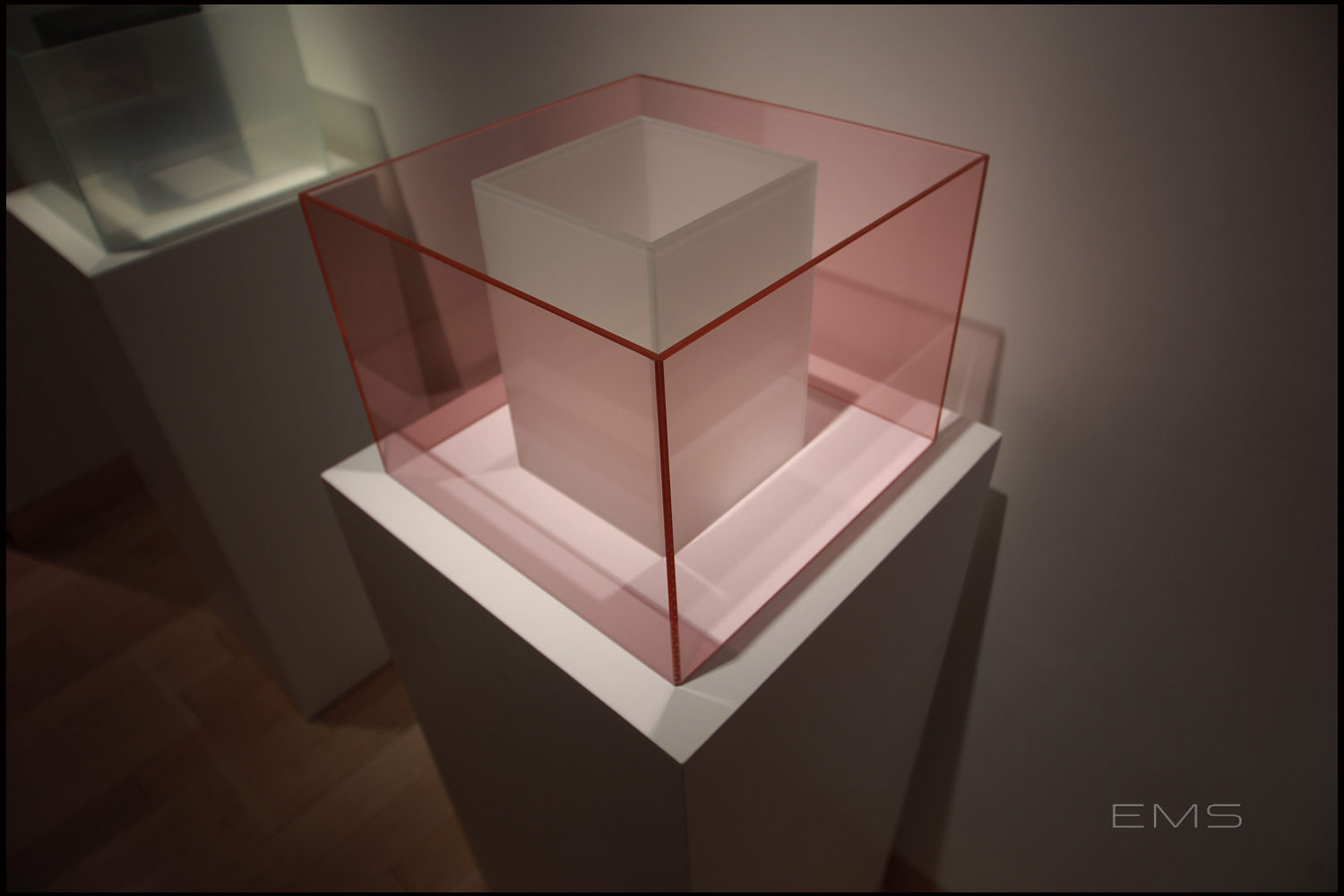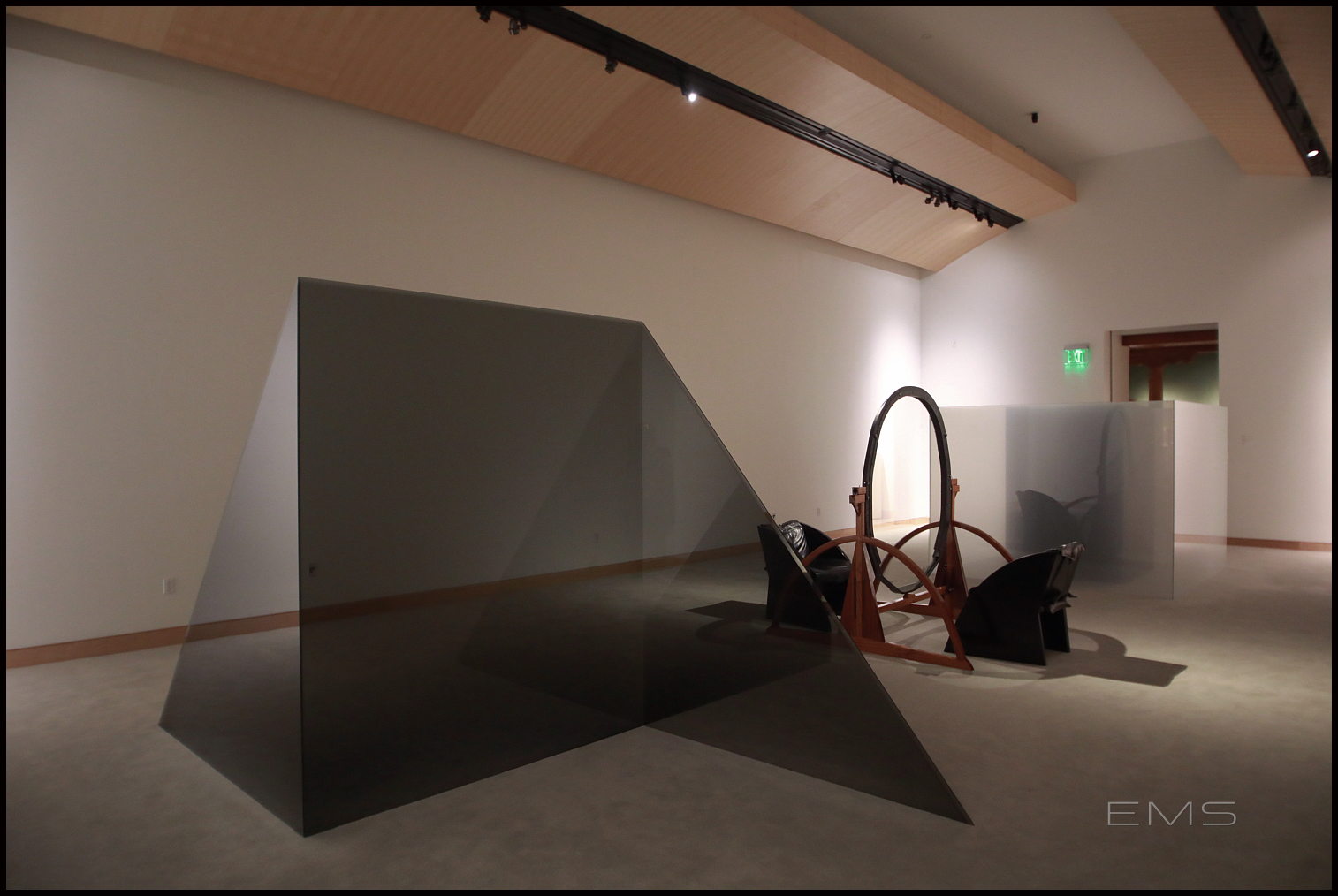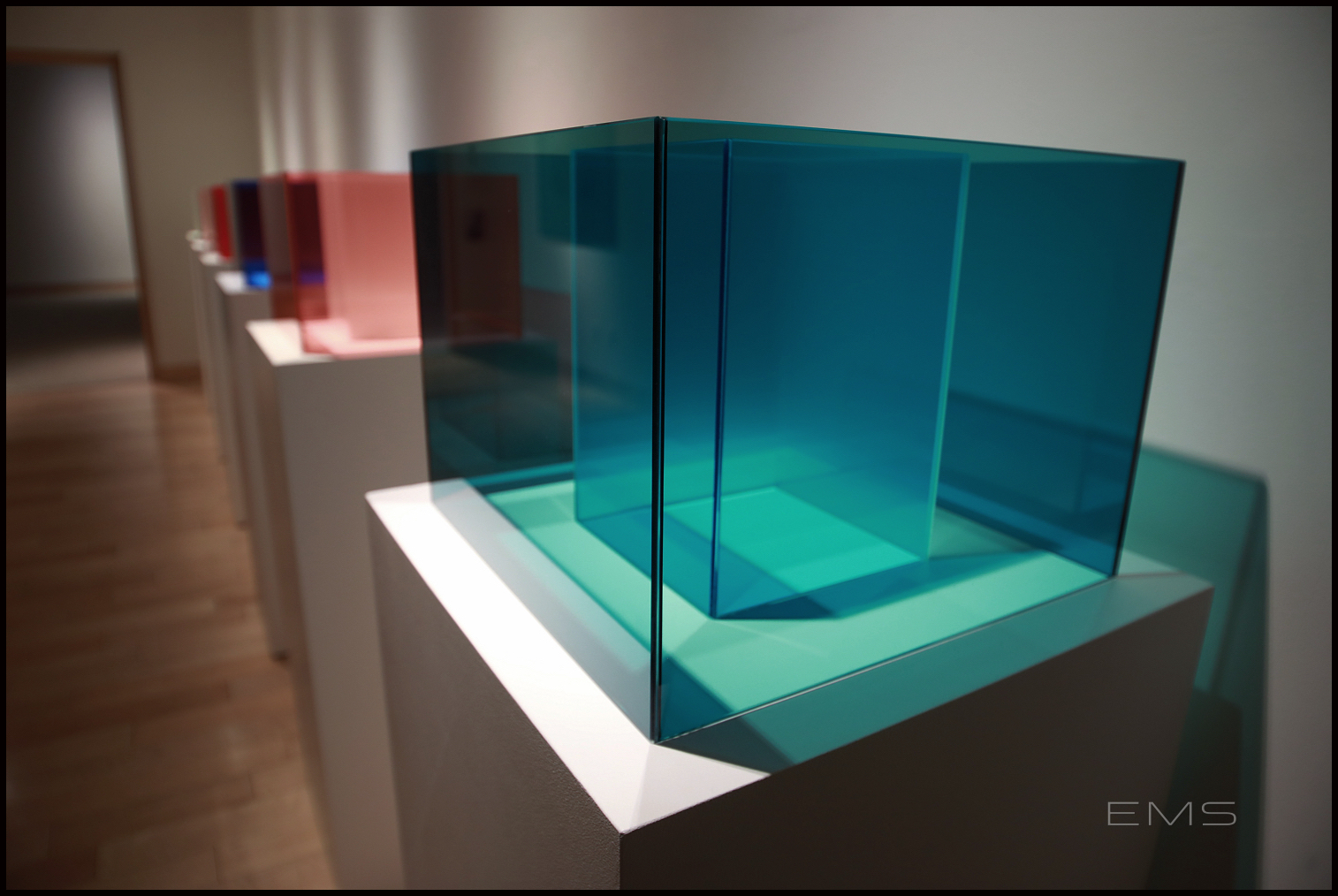
Caroline Lee and Bob Ellis Gallery presents maquettes of Bell’s recent large-scale glass compositions. They will be adjacent to a glass representation of The Solar Fountain, a monumental glass installation designed for the City of Denver in 1977, a collaboration with Eric Orr.
G.E. Foster, Jr. Gallery provides visitors with a rich survey of Bell’s work on paper, for which he uses the vacuum deposition process original devised for coating his glass sculpture. On the walls, Vapor Drawingssince 1978, the collage-formatted Mirage works from the 1980s to 2000s, and Fractions, made from 1996 to 2004. An unexpected addition to this gallery are the Light Knot mobiles, suspended spirals of polyester film strips floating from the ceiling.
Joyce and Sherman Scott Gallery illustrates the artist’s passion for something besides glass—collecting. Twelve 12-string guitars from the artist’s extensive instrument collection accompany twelve Church Studies. These are large works on paper which use Mirage-series elements, fashioned in Taos but assembled in Bell’s Venice studio (a former church). The motifs in the 60 x 40-inch Church Studies were influenced by the shapes of the guitars.
Larry Bell is one of the most noteworthy representatives of abstract art in the postwar period. His career has spanned nearly six decades and has given him an audience in all the major art centers of the world.
Bell’s medium, “light on surface,” has often utilized the technology of thin film deposition of vaporized metals and minerals on glass surfaces. His work has evolved in a number of directions, beginning with constructions, glass boxes and standing wall glass panel sculptures. Other bodies of work include Vapor Drawings, Mirage works (collages) on paper and canvas, Furniture de Lux, Sumer (a series of calligraphic bronze figures up to 30 feet in height), and Fractions, a series of 12,000 small 10 x 10-inch collage works on paper.
Bell exhibits extensively in museums and galleries internationally and in the U.S. and has been awarded numerous public art commissions. He was born in Chicago in 1939 and grew up in the San Fernando Valley of California. He briefly attended Chouinard Art Institute in Los Angeles where he met other students and teachers who would become lifelong friends and fellow artists. He moved to Taos, New Mexico in 1973 and currently maintains studios in both Taos and Venice, California.

